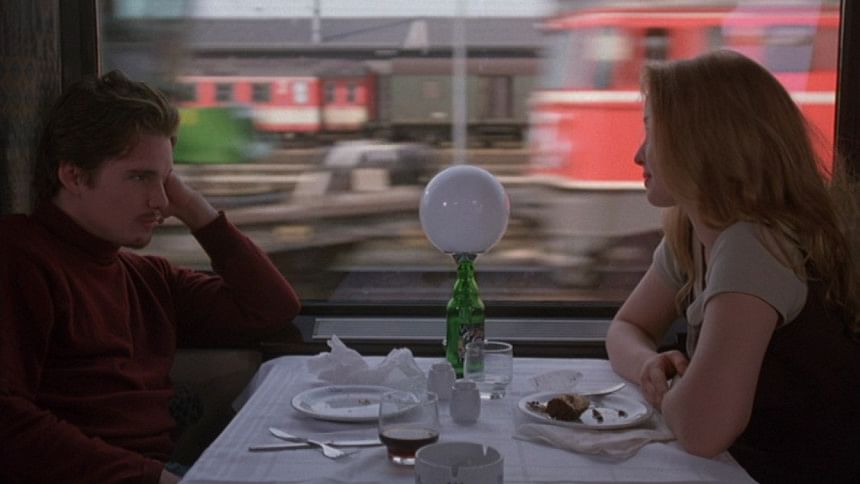The cinematic appeal of no-plot movies

A movie's plot is integral to the story it's trying to tell, as the story ebbs and flows through the plot it wields. A plot sequences events to establish coherence between scenes and determines what shall follow afterwards.
Yet, there are some movies that create a unique ambiance through non-linear storytelling. They have no cohesive plot and refrain from depicting climactic and anticlimactic events. These no-plot movies try to incite contemplative questions juxtaposed within an ambiguous narrative which makes them all the more authentic.
In Jim Jarmusch's Paterson, the titular character played by Adam Driver, lives a tedious life. The only times we can register a change in his rather stoic and laid-back existence is when his love for poetry comes into play. If this were a mainstream movie, perhaps, poetry would've inspired a journey of self-discovery, fame, or some other revelation. Here, poetry doesn't change the flow of Patterson's uneventful life. Paterson writes poetry for himself and in the process finds simple pleasures in his mundane life as a working-class man.
Usually, a plot steers the screenplay. But when there is no plot, dialogues and character interactions build the movie from the ground up. This allows movies to veer into diverse thematic explorations as opposed to setting precedent for a central conflict.
For instance, in Richard Linklater's Before trilogy, sequences of long conversations spark a romance between its protagonists Celine and Jesse. They quickly delve into passionate discussions and volatile debates on seemingly isolated incidents that subsequently converge to explore specific central themes in each movie: beauty of young love, the possibilities of what could be, and how love changes.
In absence of a structured storyline, audiences don't have to keep up with looping subplots and rapid progression of events. It allows cinematography to assume limelight. Experimentation with frames, focus, colour palettes, saturation, camera lenses, and textures tell tales that can take on different narratives based on the audience's interpretations.
Kogonada's debut movie, Columbus, flaunts modern architectural shots in frames within frames. We see protagonists, Jin and Casey, inseparable from the composition of their surroundings. Architecture supplements physical surfaces that act as metaphorical props and backgrounds to visualise fluctuating emotions. Use of symmetrical lines, unique compositions, and vastness of space confines the movie within a sense of stagnation, akin to the relationships the protagonists share with their parents and dreams.
Some movies are fictional recollections of shared universal experiences. Movies like Frances Ha or Drive My Car explore the human condition. An intricate plot would've only taken away focus from what mattered – character-driven storytelling.
Most of Sofia Coppola, Terrence Malick, or Wong Kar-wai's movies feature very distinctive cinematic styles with minimal plot. While Wong Kar-wai uses colour palettes and hypnotic camera work to portray definite moods, Sofia Coppola uses framing and silence of her characters to create an identifiable framework. Dialogues give little away about what the characters are actually feeling and the audience is asked to introspect, decipher, and decide what moods and meanings are being conveyed.
No-plot movies attempt to create worlds where stories and reality coalesce with little cause and effect. Stories that conclude with little certitude. These movies are made of metaphors, themes, of the sinews of realistic characters in the backdrop of intricate visual landscapes.
Send Nuzha much-needed validations at [email protected]

 For all latest news, follow The Daily Star's Google News channel.
For all latest news, follow The Daily Star's Google News channel. 








Comments